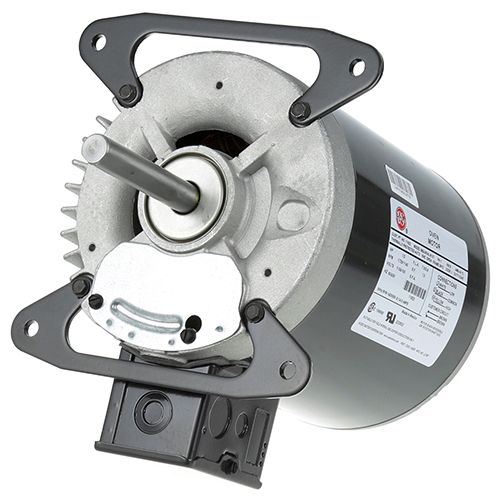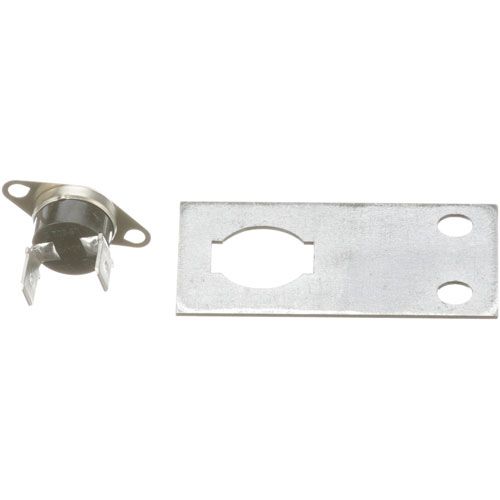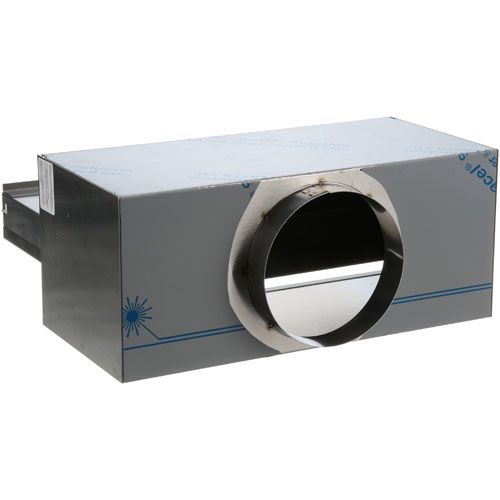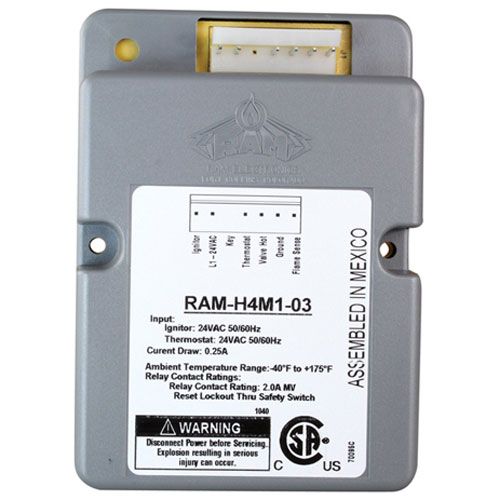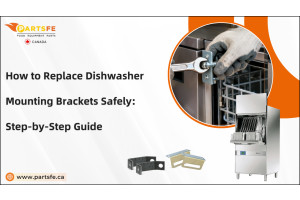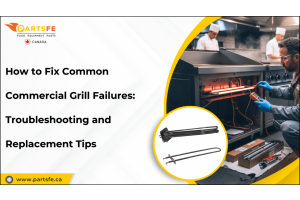How to Replace Your Oven Thermostat: Complete Guide to Thermostat Replacement?
Oven thermostat not working? The oven thermostat plays a crucial role in regulating the temperature of your oven, ensuring your dishes are cooked to perfection. Over time, these components can wear out or malfunction, leading to inaccurate temperature readings and uneven cooking. If you're having trouble with your oven’s temperature control, replacing the thermostat could be the solution.
This comprehensive guide will walk you through the process of replacing your oven thermostat, providing step-by-step instructions, helpful tips, and safety considerations. Whether you're a seasoned DIYer or someone new to appliance repairs, you’ll find this guide easy to follow.
Signs That Your Oven Thermostat Needs to Be Replaced
Before you jump into replacing your thermostat, it’s important to identify if it’s truly the source of the problem. Here are some common signs that indicate a malfunctioning thermostat:
-
Inaccurate Temperature Readings: One of the most obvious signs is when your oven doesn't reach the desired temperature, or the temperature fluctuates significantly.
-
Longer Cooking Times: If your food takes longer to cook than usual, it could be because the oven is not heating up to the correct temperature.
-
Burnt or Undercooked Food: If your food is either burnt on the outside and raw on the inside, or undercooked even though you’ve followed the recipe, your thermostat may be failing to regulate the heat correctly.
-
Oven Temperature Inconsistency: If your oven temperature changes drastically during cooking, it could be due to a malfunctioning thermostat.
-
Error Codes on Digital Models: For modern ovens, a digital thermostat malfunction may trigger an error code on the display, which could indicate a need for replacement.
If you notice one or more of these signs, it might be time to replace your oven thermostat.
Oven Thermostat Replacement Cost
The cost of replacing an oven thermostat can vary depending on several factors, including the make and model of the oven, the complexity of the installation process, and whether you choose to hire a professional technician for the replacement.
A. DIY replacement: If you opt to replace the oven thermostat yourself, the cost would primarily be the price of the new thermostat, which can range from $50 to $200, depending on the brand and compatibility with your oven model. You may also incur additional costs for any tools or equipment needed for the replacement. A replacement thermostat for a premium brand, such as Vulcan, Star, or Imperial, can be significantly more expensive than a basic brand, such as Hobart or Pitco.
|
Type of Repair |
Repair Cost Range |
|
Faulty control board |
$150–$300 |
|
Odd noises |
$100–$300 |
|
Gas oven clicking sounds |
$200–$350 |
|
Poor or slow heating |
$100–$600 |
|
Problems with self-cleaning |
$100–$600 |
B. Professional installation: If you decide to hire a professional technician to replace the oven thermostat, you may need to budget for service fees, which can range from $100 to $300, depending on the technician's hourly rate and the complexity of the installation. This cost would be in addition to the price of the new thermostat.
C. Oven parts and labor: In some cases, service providers may offer a package deal that includes both the thermostat cost and the installation labor. This bundled option can provide cost savings compared to purchasing the oven parts and labor separately.
|
Over Parts |
Cost Ranges |
|
New Thermostat |
$100 - $300 |
|
Oven door |
$150 - $200 |
|
Door switch |
$100 - $200 |
|
Igniter |
$150 - $250 |
|
Control board |
$200 - $250 |
|
Fan |
$150 - $250 |
|
Gasket |
$150 - $200 |
|
Fan motor |
$150 - $200 |
|
Sensor |
$150 - $200 |
|
Gas valve |
$100 - $200 |
|
Heating element |
$250 - $300 |
D. Additional Charges: Depending on the technician or service provider, there may be additional charges for service call fees, diagnostic fees, or any necessary adjustments or calibrations after the thermostat replacement.
|
Additional Oven Costs |
Price Ranges |
|
Stovetop Repairs |
$150 to $600 |
|
Local Permits |
$10 to $500 |
|
Extended warranties |
$200 to $400 (on average) |
|
Oven Cleaning Fees |
$25 |
|
DIY Oven Repair Costs |
$10 to $50 |
|
Hiring a Pro to repair the oven |
$50 to $200 |
E. Warranty Considerations: If your oven is still under warranty, the manufacturer may cover the cost of the thermostat replacement, provided that the issue is within the warranty terms.
At PartsFe, we sell oven components like as doors, gaskets, and thermostats for $50 to $100 or more. We work with a diverse selection of brands giving us a significant edge over retail stores that sell a limited number of thermostat models.
Tools and Materials You’ll Need
Before starting, make sure you have the right tools and replacement parts. Here’s a list of what you’ll need:
Tools:
-
Screwdriver (flathead or Phillips, depending on your oven's screws)
-
Socket wrench or spanner (to remove any nuts holding the thermostat in place)
-
Pliers
-
Multimeter (optional, but helpful for testing thermostat continuity)
Materials:
-
Replacement thermostat (make sure you have the correct part for your specific oven model; you can usually find this information in your oven’s manual or by checking the oven’s serial number)
-
Electrical tape (for securing wires if needed)
-
Oven cleaner (optional, in case you need to clean any areas before reassembling the oven)
Preparing Oven Thermostat for the Replacement
Before starting any work on your oven, safety should be your top priority. Here are some key steps to ensure you're ready:
-
Unplug the Oven: Always unplug your oven from the power supply to avoid any electrical hazards.
-
Shut Off the Gas (for Gas Ovens): If you have a gas oven, make sure to turn off the gas supply to the appliance to prevent any leaks or potential risks.
-
Move the Oven: Depending on your oven’s installation, you may need to move it away from the wall to access the thermostat. If necessary, get a friend or family member to help you move the oven safely.
-
Prepare a Clean Workspace: Gather all of your tools and parts in one area, and ensure you have plenty of room to work comfortably.
Once you’ve prepared, you can begin the replacement process.
Steps on How to Replace an Oven Thermostat
The exact steps will vary slightly depending on your oven model, but the general process remains the same. Below is a guide that should work for most ovens.
Step 1: Locate the Thermostat
Start by locating the thermostat in your oven. In most ovens, the thermostat will be located near the control panel, often behind a control knob or a small panel. Some models may require you to remove the oven’s front panel or back cover to gain access to the thermostat.
Step 2: Disconnect the Wires
Using your screwdriver or socket wrench, remove any screws or bolts holding the thermostat in place. Once the thermostat is loose, carefully disconnect any wires attached to it. Make note of where each wire connects (taking a photo can help) so that you can reconnect them correctly to the new thermostat.
Step 3: Remove the Old Thermostat
Once all wires are disconnected, carefully remove the old thermostat from its housing. Be gentle, as there may be other components or wires connected to it that could be damaged if not handled properly.
Step 4: Install the New Thermostat
Place the new thermostat in the same position as the old one and secure it using the screws or bolts you removed earlier. Carefully reconnect the wires according to your notes or the photo you took. Double-check the connections to make sure they are secure and correctly positioned.
Step 5: Reassemble the Oven
Once the thermostat is secured and all wires are connected, reassemble the oven by replacing any covers or panels that you had to remove. Make sure everything is properly aligned and tightened.
Step 6: Test the New Thermostat
Before using your oven, plug it back into the power source (or turn on the gas for gas ovens) and test the new thermostat. Set the oven to a specific temperature and use an oven thermometer to check if the temperature inside the oven matches the set temperature.
Testing the New Oven Thermostat
After installing the new thermostat, it's essential to check its functionality before putting your oven back into full use.
-
Check the Temperature: Place an oven thermometer inside your oven and preheat the oven to a certain temperature. After it reaches the set temperature, verify that the oven thermometer reads the same temperature.
-
Run the Oven: Run the oven for 15-30 minutes at different temperature settings to ensure it maintains consistent heat. If the oven temperature fluctuates, there may be an issue with the thermostat installation.
How can I troubleshoot and fix typical oven thermostat issues?
Here are some troubleshooting ideas to assist you solve typical oven thermostat issues:
-
Temperature inaccuracy: If there is a temperature variance, the thermostat may need recalibration. If recalibration is not successful, consider replacing the thermostat.
-
Failure to heat: Check if the heating elements are working when the oven is turned on. Listen for clicking noises indicating that the thermostat is sending a signal to heat. If the oven fails to heat, the thermostat may be faulty and require replacement.
-
Uneven heating: Place cookies or bread slices evenly across the oven racks and observe for consistent browning. Uneven browning indicates heat distribution issues. Ensure the heating elements are not covered with food debris or ashes. If heat distribution issues persist, the thermostat or heating elements may be the culprits.
-
Overheating or underheating: Use an oven thermometer to monitor the temperature's accuracy during a baking cycle. Excessive heat or failure to reach the desired temperature signals a thermostat issue. Recalibrate the thermostat following the manufacturer's instructions. If overheating or underheating persists, consider replacing the thermostat.
-
Thermostat calibration issues: Check the oven at various temperature settings while comparing the real temperature to the desired temperature. If the thermostat consistently fails to maintain accurate temperatures across settings, recalibration may be necessary.
-
Continuous cycling: Monitor the oven as it cycles on and off during operation. If the thermostat triggers frequent cycling, there may be a calibration issue or a faulty component. Recalibrate the thermostat first, and if the problem persists, consider professional assessment or replacement.
How can you maintain and extend the life of your oven thermostat?
Maintaining and prolonging the life of your oven thermostat can help ensure consistent performance and reliable temperature control. Here are several essential maintenance tips:
-
Regular cleaning: Remove all food debris, spills, and grease from around the thermostat and inside the oven. Regular cleaning avoids buildup, which can damage the thermostat's accuracy and efficiency.
-
Avoiding excessive temperature changes: Minimize sudden temperature changes by preheating the oven at a moderate pace. Rapid fluctuations in temperature increase wear and tear on the thermostat.
-
Using proper cookware: Use cookware that evenly distributes heat to avoid placing additional strain on the thermostat. Proper cookware ensures that the thermostat operates within its designed parameters.
-
Avoiding excessive force: Handle control knobs and buttons with care to prevent damage to the thermostat components. Avoid forcefully turning or adjusting the temperature controls.
-
Regular calibration checks: Periodically test the oven's temperature accuracy using an oven thermometer to ensure the thermostat remains calibrated.
-
Professional maintenance: Consider arranging regular maintenance checks with a skilled technician to assess the thermostat and ensure proper performance.
-
Avoiding DIY repairs unless knowledgeable: Refrain from attempting DIY repairs or modifications to the thermostat unless you have the knowledge and expertise to do so. Improper adjustments can damage the thermostat and compromise its performance.
-
Ventilation and airflow: Make sure the oven's ventilation and airflow systems are clear. Proper airflow helps to keep temperatures stable and prevents the thermostat and internal components from overheating.
-
Upgrading components when necessary: Consider upgrading faulty or outdated components in the oven, including the thermostat, to ensure efficient operation and prolong the appliance's lifespan.
Replacing your oven thermostat is a task that can significantly impact your oven's performance and cooking efficiency. By following the appropriate steps for replacing the thermostat, you can restore accurate temperature control, ensure even heating, and prevent potential safety hazards. It's important to approach the replacement process with caution, ensuring that the oven is disconnected from the power source and that all steps are performed carefully. Additionally, proper maintenance and regular checks can prolong the life of a newly installed thermostat, ensuring that it continues to operate efficiently. By following the manufacturer's guidelines for care and considering professional maintenance when necessary, you can maximize the lifespan and performance of your oven thermostat, ultimately enhancing your cooking experience.
FAQs
How do I know if my oven thermostat needs to be replaced?
Inconsistent temperature, uneven cooking, or your oven failing to heat up are all signs of a broken thermostat. If you encounter these problems, it's probably time for a replacement.
Do I need any specialized tools to repair the thermostat?
Screwdrivers, pliers, and a socket wrench set may be necessary. You may also require a multimeter to test the new thermostat's operation.
How long does it take to repair the oven thermostat?
The duration varies according to your skill level and the complexity of your oven type. In general, the replacement operation can take between 1 and 3 hours.


